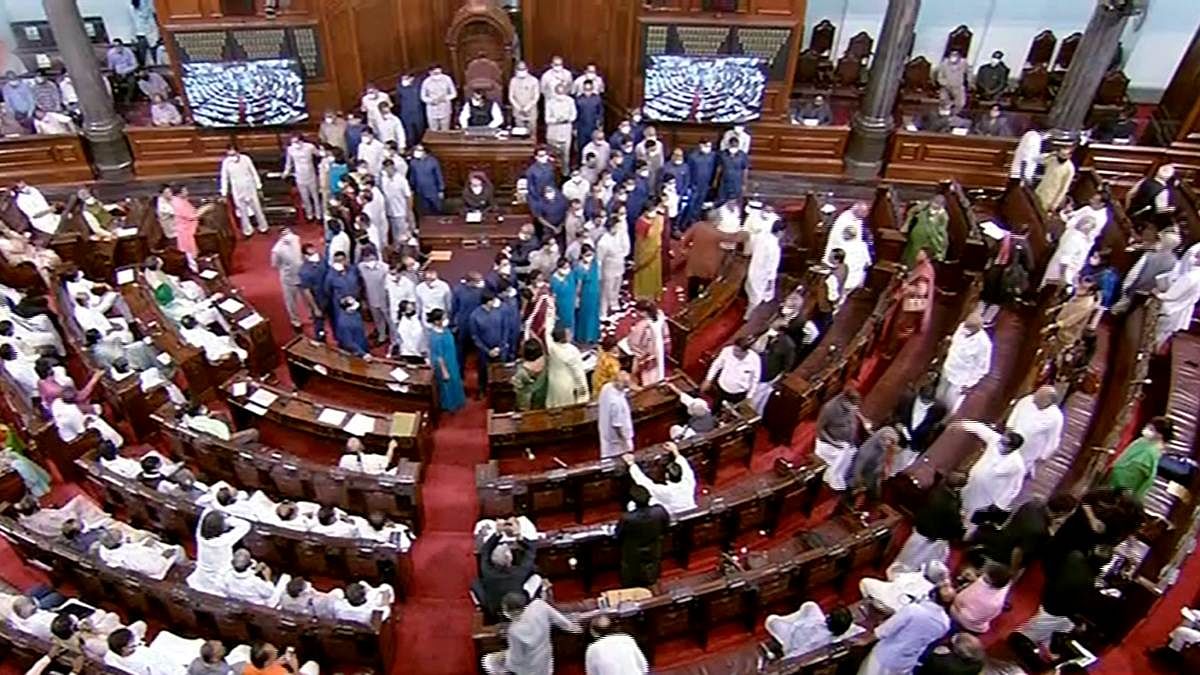From UPSC perspective, the following things are important :
Prelims level: na
Mains level: parliamentary dysfunction

Central idea
The central theme highlights parliamentary dysfunction due to procedural stagnation and a historical cycle of disruptions. The ongoing impasse, evidenced by the suspension of MPs, underscores the need for a nuanced institutional response and a redefined role for the Opposition in shaping parliamentary discourse. The article advocates procedural changes to grant the Opposition more influence, fostering collaboration and preserving public trust in Parliament.
Key Highlights:
- The parliamentary dysfunction is rooted in the absence of procedural mechanisms for deliberation on contentious issues.
- The ongoing impasse between the government and the Opposition has led to the suspension of 141 MPs.
- The Opposition demands a statement from the Home Minister regarding a security breach, while the government defers to the Speaker’s directions.
- Disruptions in Parliament have historical roots, dating back to the 1960s, and have evolved into a political tool.
- The institutional response to disruptions has been simplistic, focusing on penalizing MPs rather than addressing the underlying issues.
Key Challenges:
- Procedural stagnation in the parliamentary system has led to a cycle of disruptions and disciplinary actions.
- The government’s control over the legislative agenda limits the Opposition’s role, contributing to parliamentary standoffs.
- The current approach of penalizing MPs for disruptions is deemed ineffective in ensuring the smooth functioning of Parliament.
Key Terms and Phrases:
- Parliamentary dysfunction
- Security breach
- Disruptions as a political tool
- Institutional response
- Legislative and fiscal priorities
- Opposition’s role and space in Parliament
- Procedural stagnation
- Westminster parliamentary principle
- No-confidence motion
- National legislature
Key Quotes and Statements:
- “The standoff in Parliament is not new…result from years of procedural stagnation.”
- “Disruptions were going to become the norm in our parliamentary discourse.”
- “The smooth functioning of the legislature was the responsibility of the government.”
- “For Parliament to work effectively, penalising MPs will not be enough.”
- “The recent disruptions and en masse suspension of MPs should be a wake-up call for our national legislature.”
Key Examples and References:
- Suspension of 141 Opposition MPs in the ongoing winter session of Parliament.
- Historical instances of MPs like Ram Sewak Yadav and Mani Ram Bagri being warned and suspended for disruptions.
- Speaker Chatterjee’s remark in 2005 on the difficulty of regulating proceedings if a group of members disrupts the House.
Key Facts and Data:
- Disruptions in parliamentary proceedings by MPs began in the 1960s.
- The current parliamentary system reflects pre-independence British templates.
- Private members get two-and-a-half hours every Friday for discussion, but there is no mechanism for a group of MPs to require a specific discussion.
Critical Analysis:
- The article highlights the historical context and evolution of parliamentary disruptions.
- It critiques the current institutional response, emphasizing the need for a more nuanced approach.
- It challenges the existing view of Parliament as a platform primarily for the government to transact business.
Way Forward:
- Proposes a change in parliamentary procedures to allow the Opposition to set the agenda for debate.
- Suggests incorporating specific days in the parliamentary calendar for Opposition-led discussions.
- Urges Parliament to find better solutions for fostering debate to prevent the erosion of public faith.
Get an IAS/IPS ranker as your 1: 1 personal mentor for UPSC 2024
